Naweed Khan
Few-shot Policy (de)composition in Conversational Question Answering
Jan 20, 2025



Abstract:The task of policy compliance detection (PCD) is to determine if a scenario is in compliance with respect to a set of written policies. In a conversational setting, the results of PCD can indicate if clarifying questions must be asked to determine compliance status. Existing approaches usually claim to have reasoning capabilities that are latent or require a large amount of annotated data. In this work, we propose logical decomposition for policy compliance (LDPC): a neuro-symbolic framework to detect policy compliance using large language models (LLMs) in a few-shot setting. By selecting only a few exemplars alongside recently developed prompting techniques, we demonstrate that our approach soundly reasons about policy compliance conversations by extracting sub-questions to be answered, assigning truth values from contextual information, and explicitly producing a set of logic statements from the given policies. The formulation of explicit logic graphs can in turn help answer PCDrelated questions with increased transparency and explainability. We apply this approach to the popular PCD and conversational machine reading benchmark, ShARC, and show competitive performance with no task-specific finetuning. We also leverage the inherently interpretable architecture of LDPC to understand where errors occur, revealing ambiguities in the ShARC dataset and highlighting the challenges involved with reasoning for conversational question answering.
A Neuro-Symbolic Approach to Multi-Agent RL for Interpretability and Probabilistic Decision Making
Feb 21, 2024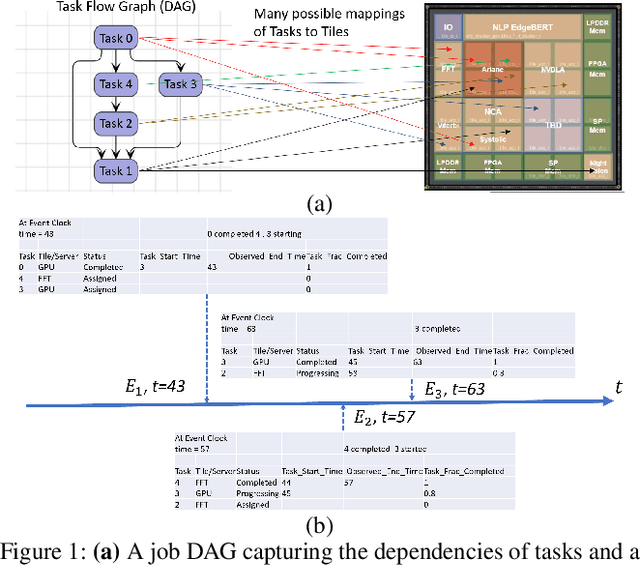


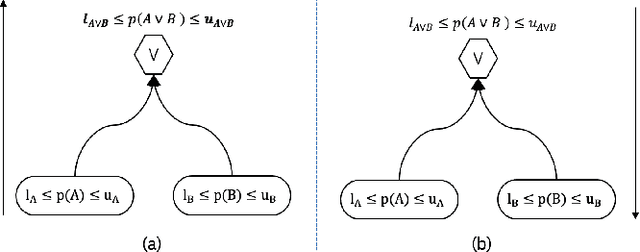
Abstract:Multi-agent reinforcement learning (MARL) is well-suited for runtime decision-making in optimizing the performance of systems where multiple agents coexist and compete for shared resources. However, applying common deep learning-based MARL solutions to real-world problems suffers from issues of interpretability, sample efficiency, partial observability, etc. To address these challenges, we present an event-driven formulation, where decision-making is handled by distributed co-operative MARL agents using neuro-symbolic methods. The recently introduced neuro-symbolic Logical Neural Networks (LNN) framework serves as a function approximator for the RL, to train a rules-based policy that is both logical and interpretable by construction. To enable decision-making under uncertainty and partial observability, we developed a novel probabilistic neuro-symbolic framework, Probabilistic Logical Neural Networks (PLNN), which combines the capabilities of logical reasoning with probabilistic graphical models. In PLNN, the upward/downward inference strategy, inherited from LNN, is coupled with belief bounds by setting the activation function for the logical operator associated with each neural network node to a probability-respecting generalization of the Fr\'echet inequalities. These PLNN nodes form the unifying element that combines probabilistic logic and Bayes Nets, permitting inference for variables with unobserved states. We demonstrate our contributions by addressing key MARL challenges for power sharing in a system-on-chip application.
Question Answering over Knowledge Bases by Leveraging Semantic Parsing and Neuro-Symbolic Reasoning
Dec 03, 2020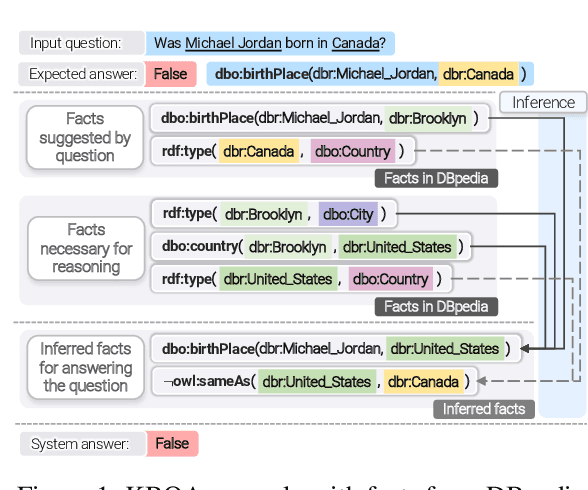
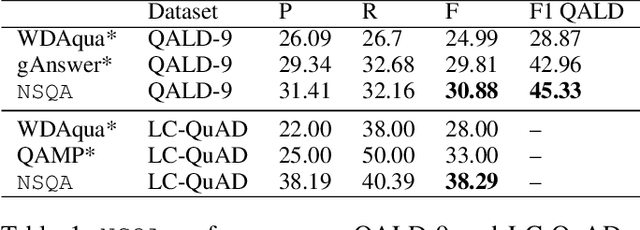
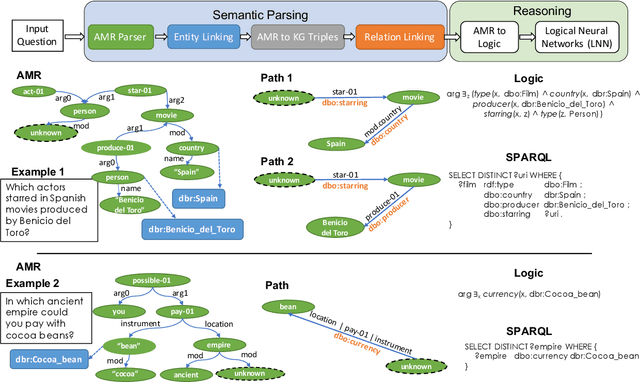

Abstract:Knowledge base question answering (KBQA) is an important task in Natural Language Processing. Existing approaches face significant challenges including complex question understanding, necessity for reasoning, and lack of large training datasets. In this work, we propose a semantic parsing and reasoning-based Neuro-Symbolic Question Answering(NSQA) system, that leverages (1) Abstract Meaning Representation (AMR) parses for task-independent question under-standing; (2) a novel path-based approach to transform AMR parses into candidate logical queries that are aligned to the KB; (3) a neuro-symbolic reasoner called Logical Neural Net-work (LNN) that executes logical queries and reasons over KB facts to provide an answer; (4) system of systems approach,which integrates multiple, reusable modules that are trained specifically for their individual tasks (e.g. semantic parsing,entity linking, and relationship linking) and do not require end-to-end training data. NSQA achieves state-of-the-art performance on QALD-9 and LC-QuAD 1.0. NSQA's novelty lies in its modular neuro-symbolic architecture and its task-general approach to interpreting natural language questions.
Logical Neural Networks
Jun 23, 2020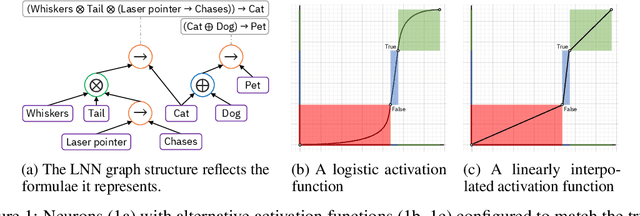

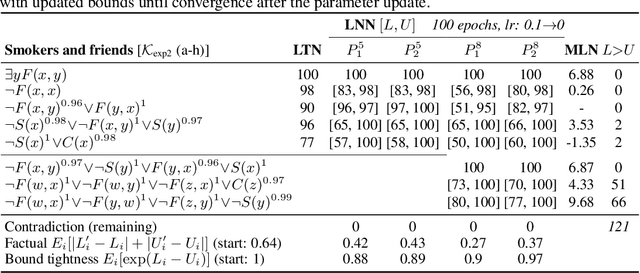

Abstract:We propose a novel framework seamlessly providing key properties of both neural nets (learning) and symbolic logic (knowledge and reasoning). Every neuron has a meaning as a component of a formula in a weighted real-valued logic, yielding a highly intepretable disentangled representation. Inference is omnidirectional rather than focused on predefined target variables, and corresponds to logical reasoning, including classical first-order logic theorem proving as a special case. The model is end-to-end differentiable, and learning minimizes a novel loss function capturing logical contradiction, yielding resilience to inconsistent knowledge. It also enables the open-world assumption by maintaining bounds on truth values which can have probabilistic semantics, yielding resilience to incomplete knowledge.
Active Learning with TensorBoard Projector
Jan 03, 2019

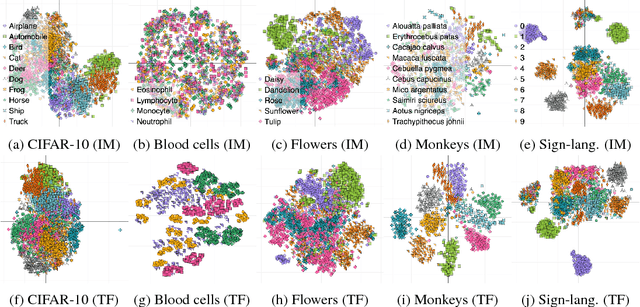

Abstract:An ML-based system for interactive labeling of image datasets is contributed in TensorBoard Projector to speed up image annotation performed by humans. The tool visualizes feature spaces and makes it directly editable by online integration of applied labels, and it is a system for verifying and managing machine learning data pertaining to labels. We propose realistic annotation emulation to evaluate the system design of interactive active learning, based on our improved semi-supervised extension of t-SNE dimensionality reduction. Our active learning tool can significantly increase labeling efficiency compared to uncertainty sampling, and we show that less than 100 labeling actions are typically sufficient for good classification on a variety of specialized image datasets. Our contribution is unique given that it needs to perform dimensionality reduction, feature space visualization and editing, interactive label propagation, low-complexity active learning, human perceptual modeling, annotation emulation and unsupervised feature extraction for specialized datasets in a production-quality implementation.
 Add to Chrome
Add to Chrome Add to Firefox
Add to Firefox Add to Edge
Add to Edge